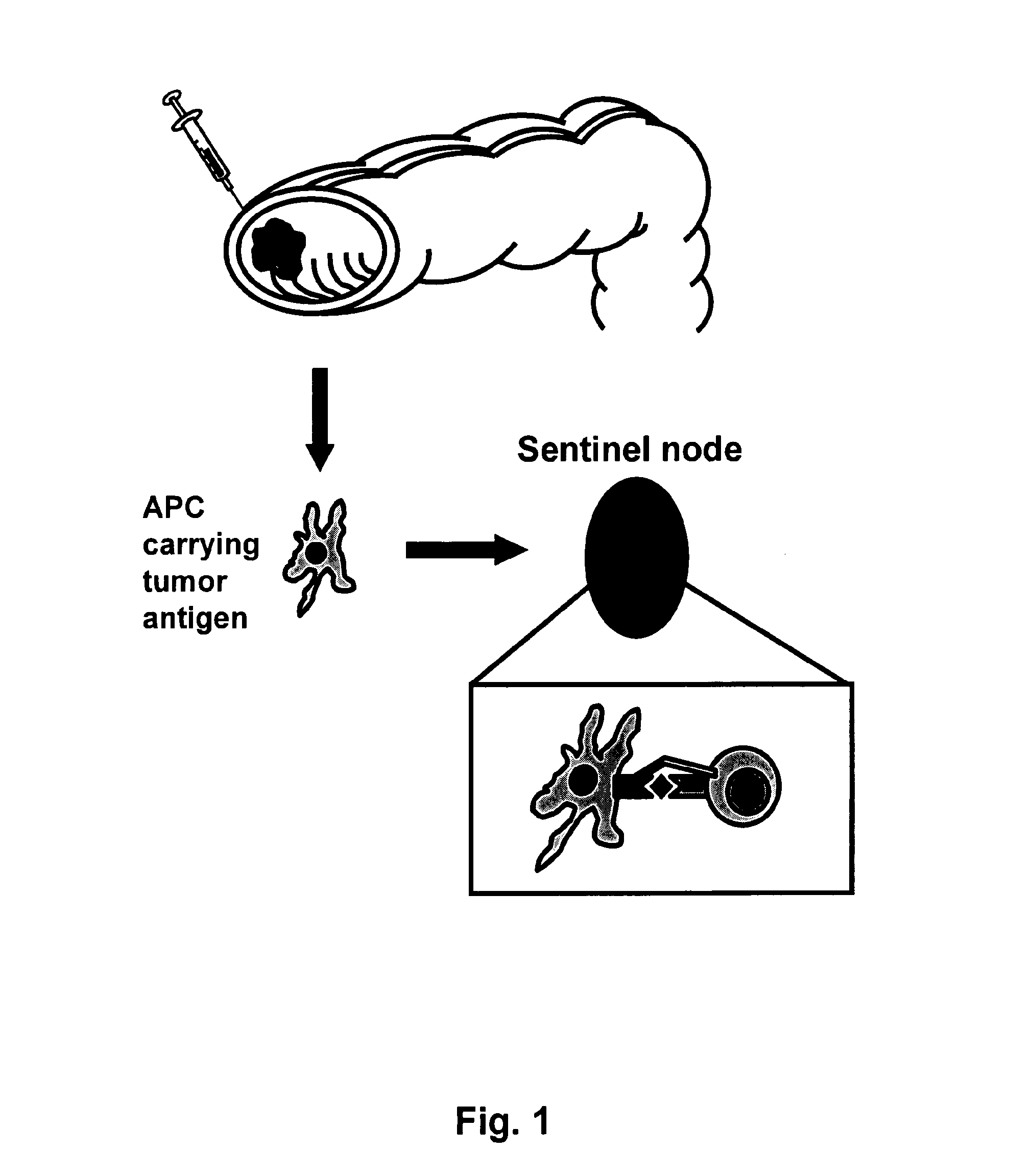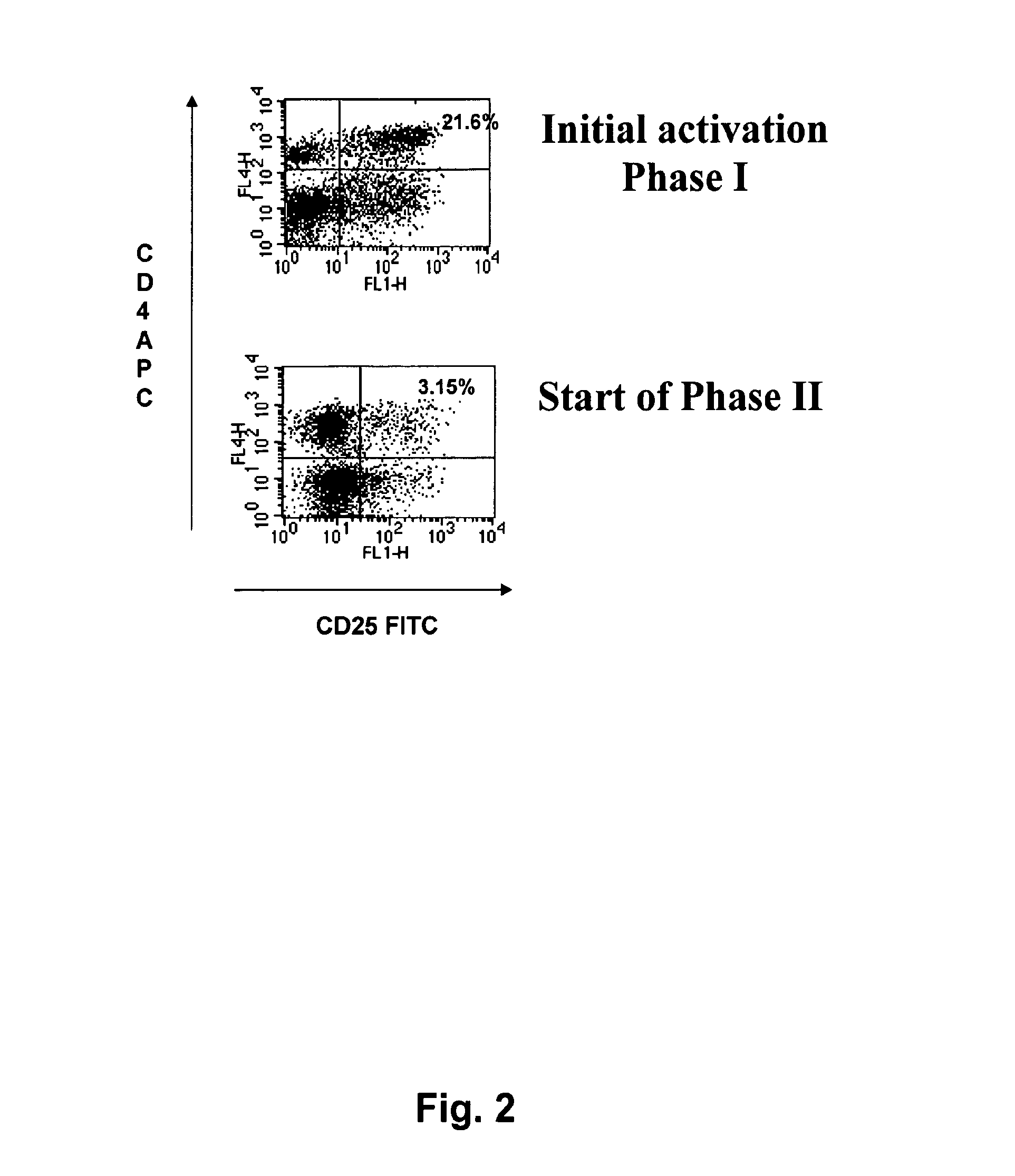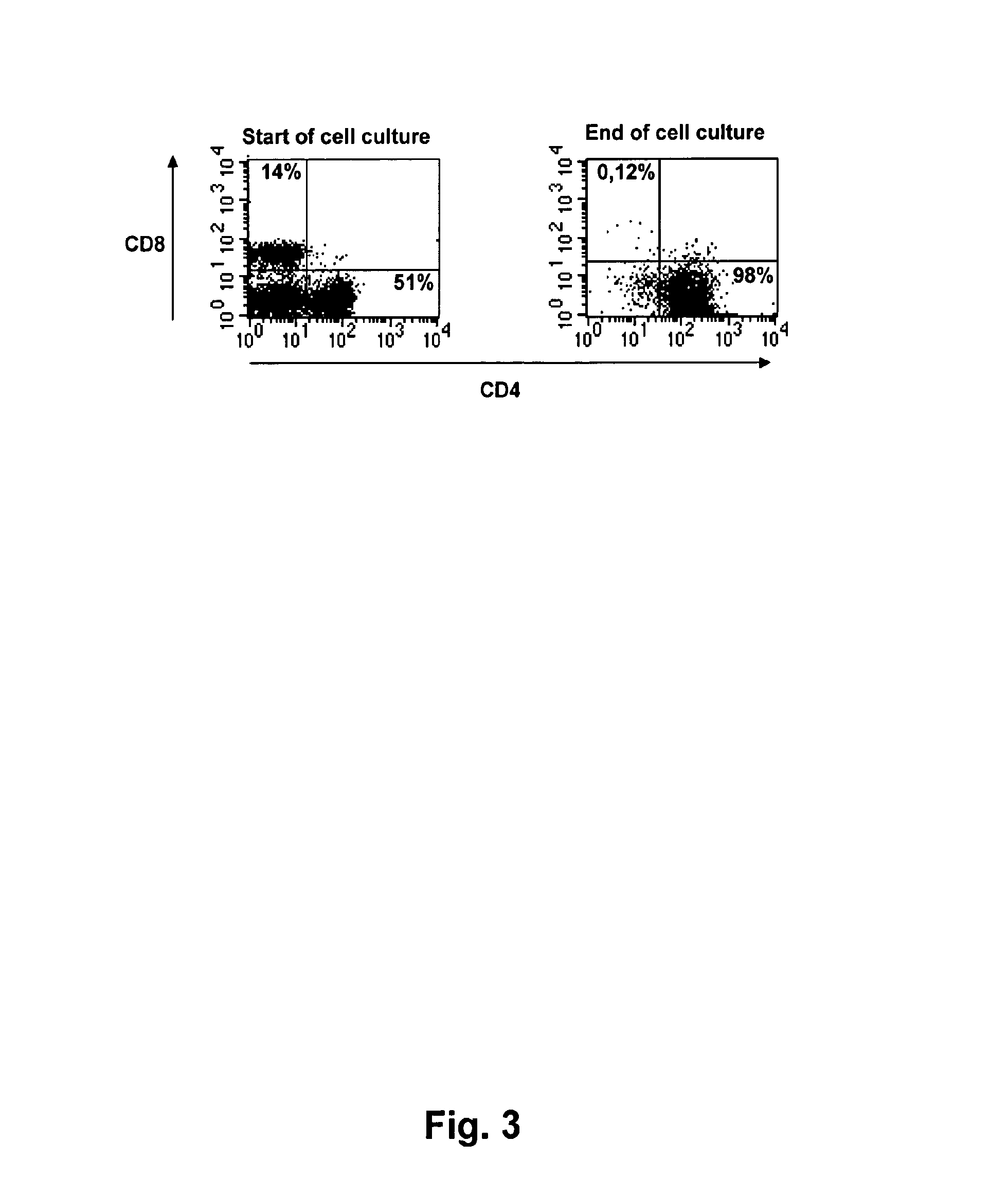Method for treating colon cancer with tumour-reactive T-lymphocytes
a technology of tumour-reactive t lymphocytes and colon cancer, which is applied in the field of immunotherapy for treating patients suffering from colon cancer, can solve the problems of difficult accurate staging of colon cancer, high dependence, and interference with the development and function of immune responses, and achieves the effect of high amount of t lymphocytes, above, and promotion of cytotoxic t lymphocytes (tc)
- Summary
- Abstract
- Description
- Claims
- Application Information
AI Technical Summary
Benefits of technology
Problems solved by technology
Method used
Image
Examples
example 1
Treatment of Patients being Diagnosed with Colon Cancer or Metastatic Colon Cancer
Methods
Identification and Removal of Sentinel and Metinel Lymph Nodes from Colon Cancer Patients:
[0137]Sixteen patients diagnosed with colon cancer, six woman and ten men with an average age of 62 years were studied. Patients were histopathologically classified as Duke's C or D. There were also 5 patients with Duke's B with aggressive tumour characteristics such as ulcerations, vascular or perineural invasion. Patients 7 and 14 however had earlier been surgically treated due to colon cancer and now had recurrent disease with metastases to the liver. The local ethical committee approved the study and each patient gave informed consent.
[0138]Identification of sentinel or metinel nodes was done intraoperatively using the sentinel node technique described herein. Mobilization of the colonic tumour site was achieved by division of peritoneal adhesions in order to facilitate inspection of tumour and mesenter...
specific embodiments
[0163]1. A method for treating a patient suffering from colon cancer, the method comprising[0164]i) identifying in a patient one or more sentinel and / or metinel lymph nodes draining a tumour in the colon or a metastasis from a tumour in the colon;[0165]ii) resecting the one or more nodes and, optionally all or part of the tumour or metastasis;[0166]iii) isolating tumour-reactive T-lymphocytes from said lymph nodes;[0167]iv) in vitro expanding said tumour-reactive T-lymphocytes, wherein the in vitro expansion comprises[0168]i) a first phase of stimulating tumour-reactive CD4+ helper and / or CD8+ T-lymphocytes with tumour-derived antigen together with at least one substance having agonistic activity towards the IL-2 receptor to promote survival of tumour-reactive CD4+ helper and / or CD8+ T-lymphocytes, and[0169]v) ii) a second phase of activating and promoting growth of tumour-reactive CD4+ helper and / or CD8+ T-lymphocytes, wherein the second phase ii) is initiated when the CD25 cell su...
PUM
 Login to View More
Login to View More Abstract
Description
Claims
Application Information
 Login to View More
Login to View More - R&D
- Intellectual Property
- Life Sciences
- Materials
- Tech Scout
- Unparalleled Data Quality
- Higher Quality Content
- 60% Fewer Hallucinations
Browse by: Latest US Patents, China's latest patents, Technical Efficacy Thesaurus, Application Domain, Technology Topic, Popular Technical Reports.
© 2025 PatSnap. All rights reserved.Legal|Privacy policy|Modern Slavery Act Transparency Statement|Sitemap|About US| Contact US: help@patsnap.com



